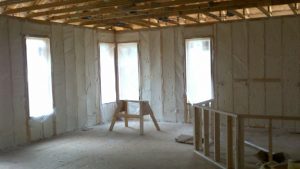 In a recent Facebook post, I included this statement:
In a recent Facebook post, I included this statement:
Caulking is one of the best protections for Healthy Indoor Air Quality in a home.
Which led to this question:
How does caulking help with healthy indoor air-quality?
The answer came from Insulation and building science expert, Ken Wells of Elite Insulation.
Air infiltration can account for 30% or more of a home’s heating and cooling costs, and contribute to problems with moisture, noise, dust, and the entry of pollutants, insects, and rodents. Reducing infiltration can significantly cut annual heating and cooling costs, improve building durability, and create a healthier indoor environment. According to a 2005 National Institute of Science and Technology (NIST) study, an energy savings of up to 62% can be realized by undertaking specific air tightness measures. In addition to energy loss, air infiltration reduces occupant comfort, interferes with efficient operation of mechanical systems, reduces indoor air quality, and contributes to condensation and moisture damage in the building envelope system. Using tight construction methods is said to be like closing a hole in your wall the size of an open window.
According to the Air Barrier Association of America, a “typical 2,500 square foot home has more than a half mile of cracks and crevices.” Unsealed, about a third of the air leakage in a home occurs through the floors, walls, and ceilings.




